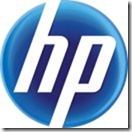Gladinet CloudAFS Creates Cloud Attached File Servers
Gladinet CloudAFS™ presents a new approach to cloud storage by attaching cloud storage to existing file servers and intelligently managing data transfer between the two tiers (local and cloud) to maintain LAN based access speeds to recently used data while storing all data in the cloud. This allows for a seamless integration of cloud storage to existing IT infrastructure.
CloudAFS use cases will fall into one of two categories. Either it will be used as an enhanced file server or as an alternative to Cloud Desktop for users with specific requirements.
Use Case 1: Enhanced File Server
Background
Traditional IT rollouts have three choices to satisfy their storage needs. They can use direct attached storage (DAS),network attached storage (NAS) or a storage area network (SAN). Each of these solutions have their own unique set of advantages and limitations. Gladinet CloudAFS introduces a fourth option, attaching cloud storage, giving a file server access to a limitless supply of storage with all the benefits that come from cloud computing:
Reduced Cost - Cloud storage is paid incrementally, saving organizations money. Traditional storage costs range from $1/GB to $5/GB. Cloud storage costs can be as low as $0.25/GB per year.
- Increased Storage - Organizations can store more data than on private computer systems.
- Highly Automated - No longer do IT personnel need to worry about keeping software up to date.
- Flexibility - Cloud computing offers much more flexibility than past computing methods.
- More Mobility - Employees can access information wherever they are, rather than having to remain at their desks.
- Allows IT to Shift Focus - No longer having to worry about constant server updates and other computing issues, government organizations will be free to concentrate on innovation.
Use Case 1.1: CloudAFS for Workgroup Access
The Situation
Your IT department has outgrown its onsite storage capacity. You need more storage but you don't have the resources. Whether the costs are too high for a new NAS or a bigger SAN, or you don't have the space or power, more of the same just won't do. All this talk of cloud storage is interesting and it certainly sounds cheaper, but it raises as many questions as it answers:- Do you really want to give a single provider control of your data?
- What about security?
- How can you get all your data into the cloud quickly to avoid downtime?
- How will your users be able to access data from the cloud?
The Solution
Use Gladinet CloudAFS to attach cloud storage and configure it to publish the attached storage.The Result
- Your storage capacity is virtually limitless and unconstrained by the physical limitations of your IT infrastructure while keeping costs to a minimum.
- Your users can access data from the cloud as quickly as when it was all on the LAN. And they can use CIFS, NFS or Gladinet Cloud Desktop to access the files.
- Your data is stored securely in the cloud using AES 256-bit encryption.
- You can seamlessly switch cloud storage providers or use multiple concurrently.
- Gladinet CloudAFS manages the transfer of data between the cloud tier and local tier so that the system is live immediately after installation. There is no need to wait for large data sets to be uploaded.

Once this has been done, they don't have to worry about access points, keys, settings, or complex network configuration issues like making sure that Gladinet Cloud Desktop has access to port 80 on the loopback interface. Everything is managed at the server.



Comments